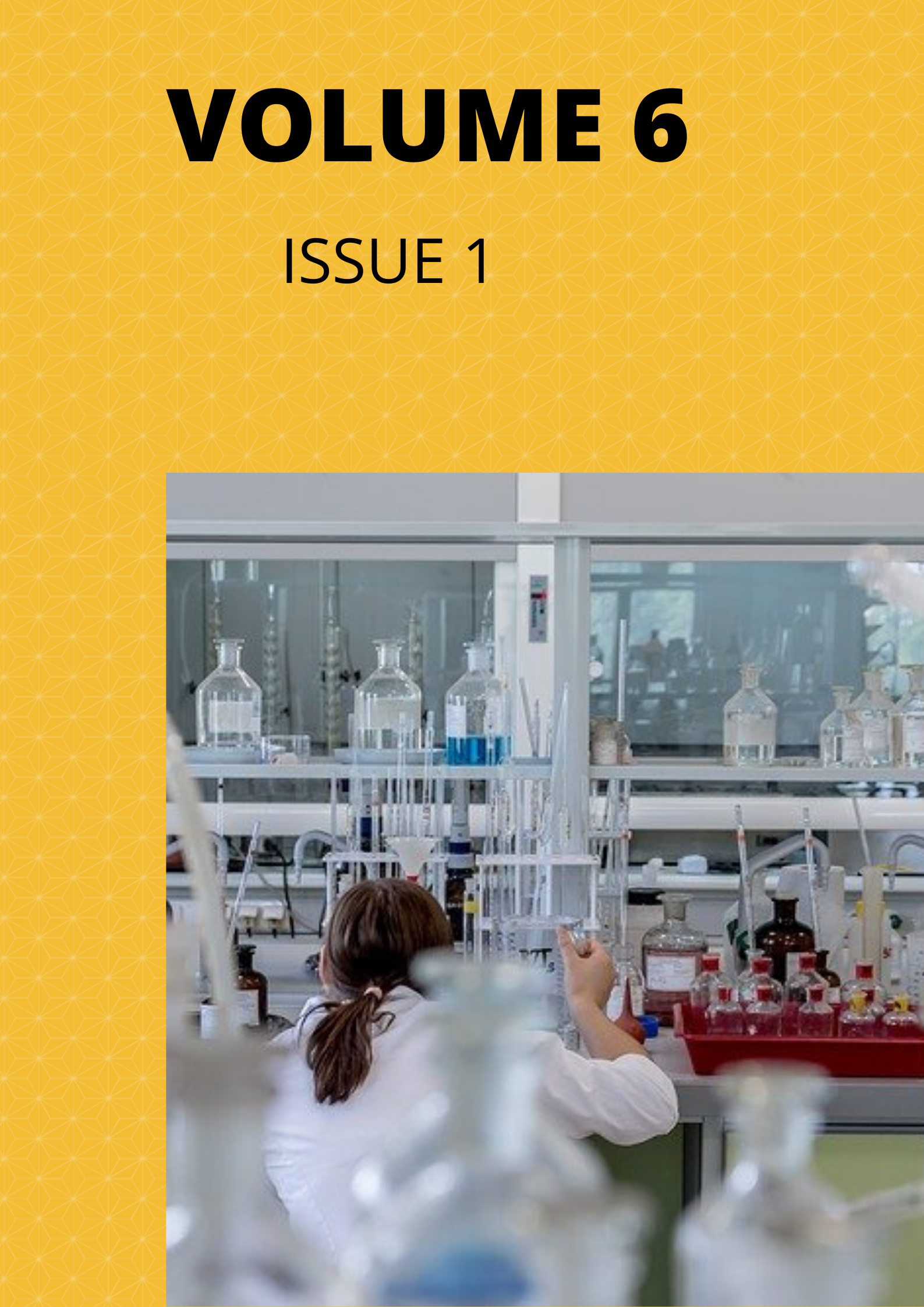Microbial Contamination of Infant Diapers
Keywords:
Microorganisms, contamination, diapers, bacterial isolates, fungal isolatesAbstract
This study investigated the microbial contamination of infant diapers. Five (5) different samples of infant diapers were used for this study. The results revealed that samples were contaminated by microorganisms. The highest bacterial count was recorded in sample 1 with a total bacterial count of 2.0 x 103 CFU/g, followed by sample 3 with a total bacterial count of 1.4 x 103 CFU/g. Sample 4 had a bacterial count of 1.3 x 103 CFU/g, sample 5 had a total bacterial count of 1.2 x 103 CFU/g while the least bacterial count was recorded in sample 2 with a total bacterial count of 1.0 x 103 CFU/g. The bacterial genera identified and their percentage frequency of occurrence were Bacillus sp.(29%), Staphylococcus sp.(35%), Pseudomonas sp.(12 %), Streptococcus sp.(24 %),while ,E.coli and Proteus sp. had 26 % percentage frequency of occurrence each respectively. The fungal count ranged between 1.0 x 103 to 1.6 x 103 CFU/g. The fungal isolates identified from this study and their percentage frequency of occurrence were Candida albicans (24 %), Penicillium sp.(19 %), Rhizopus sp.(10 %), Aspergillus sp.(14 %) and Mucor sp.(8 % ). Susceptibility results indicated that 95 % of that bacterial isolates were sensitive to Ciprofloxacin, Gentamycin, Levofloxacin, Oflaxacin, Ampicillin, Septrin, Ceprorex, Amoxil, Streptomycin, and Rifampicin. Five bacterial isolates were resistant to more than one class of antibiotics. E.coli. was resistant to Pefloxacin, Ceprorex, and Ampicillin. Pseudomonas sp. was resistant to Pefloxacin and Gentamycin. Proteus sp. was resistant to Septrin and Pefloxacin while Bacillus sp was resistant to Amoxil, Rifampicin and Chloramphenicol. The presence of these microbial contaminants in diapers could be attributed to existing of microorganisms in the raw materials during processing and manufacturing, packaging, storage, handling and transportation of this product. Hence, a routine microbial study is thus suggested.
Downloads
Published
Issue
Section
Most read articles by the same author(s)
- Imaobong T. Adenugba, Nkeneke E. Akpainyang , Emem I. Ntekpere, Eteyen A. Uko, Agnes M. Jones, Incidence of Tinea pedis and Eczema among Male and Female Students: Effect of Hydraulic Oil and Antifungal Creams , Communication In Physical Sciences: Vol. 6 No. 1 (2020): VOLUME 6 ISSUE 1
- Itoro U. Okon, Eteyen A. Uko, Aniebiet M. Essien, Rachel S. Okon, H. H. Oronubong, Application of Moringa oleifera as a Natural Coagulant for the Treatment of wastewater from Bakery and Brewery Industries in Uyo, Akwa Ibom State, Nigeria , Communication In Physical Sciences: Vol. 7 No. 4 (2021): VOLUME 7 ISSUE 4
Similar Articles
- Eteyen Uko, Microbiological Analysis and Antibiogram of Blood Pressure Cuffs in Some Primary Health Centres in Ikot Ekpene Metropolis, South- South Nigeria , Communication In Physical Sciences: Vol. 12 No. 6 (2025): Volume 12 ISSUE 6
- Itoro U. Okon, Eteyen A. Uko, Aniebiet M. Essien, Rachel S. Okon, H. H. Oronubong, Application of Moringa oleifera as a Natural Coagulant for the Treatment of wastewater from Bakery and Brewery Industries in Uyo, Akwa Ibom State, Nigeria , Communication In Physical Sciences: Vol. 7 No. 4 (2021): VOLUME 7 ISSUE 4
- Azeh Yakubu, Mohammed Aliyu-Paiko, Asseh Emmanuel, The Potential of Arginine-Modified Nanoclay Suspension Against Fungi and Bacteria Infestation in Maize and Groundnut , Communication In Physical Sciences: Vol. 12 No. 2 (2025): VOLUME 12 ISSUE 2
- Imaobong T. Adenugba, Nkeneke E. Akpainyang , Emem I. Ntekpere, Eteyen A. Uko, Agnes M. Jones, Incidence of Tinea pedis and Eczema among Male and Female Students: Effect of Hydraulic Oil and Antifungal Creams , Communication In Physical Sciences: Vol. 6 No. 1 (2020): VOLUME 6 ISSUE 1
- Izuagbe Gilbert Osigbemhe , Muluh Emmanuel Khan, SYNTHESIS, SPECTROSCOPIC CHARACTERIZATION AND BIO-INVESTIGATION of N-(2-furylmethylidene)-1,3, 4-thiadiazole-2-amine and its Iron (III) COMPLEXES , Communication In Physical Sciences: Vol. 12 No. 4 (2025): VOLUME1 2 ISSUE 4
- S. A. Odoemelam, Assessment of Heavy Metal Status of Orashi River Along the Engenni Axis, Rivers State of Nigeria , Communication In Physical Sciences: Vol. 4 No. 2 (2019): VOLUME 4 ISSUE 2
- J. C. Nnaji, Heavy Metal Contamination Indices for oil spilled Agricultural Soils in three Local Government Areas of River State, Nigeria , Communication In Physical Sciences: Vol. 4 No. 1 (2019): VOLUME 4 ISSUE 1
- Sani Uba, Victor O. Ajibola, Oluwaseun S. Adeosun, Divine C. Ikeh, AbdulHameed. Mikail, Abel K. John, Murtala M.Ruma, Assessment of the Physicochemical Parameters, Geoaccumulation Indices and Contamination Factor of Sediments from Mairua Dam, Faskari Lga, Katsina Northwestern Nigeria , Communication In Physical Sciences: Vol. 7 No. 4 (2021): VOLUME 7 ISSUE 4
- Chidumebi Uzoho, The Role of Contaminated Water in Food Poisoning: An Assessment of Agricultural and Processing Practices , Communication In Physical Sciences: Vol. 12 No. 3 (2025): VOLUME 12 ISSUE 3
- Ifeanyi E. Otuokere, K. K. Igwe, Ni(II) complex of (3,3-dimethyl-7-oxo-6-(2-Phenylacetamido)-4-thia1-Azabicyclo[3.2.0]heptane-2-carboxylic acid : Synthesis, characterization and antibacterial activities , Communication In Physical Sciences: Vol. 5 No. 1 (2020): VOLUME 5 ISSUE 1
You may also start an advanced similarity search for this article.




